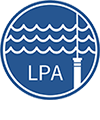Information about past climates is needed to interpret ongoing modern environmental changes. Knowledge about present and past microbiomes can be used to develop indicators of environmental change that, when applied to sediment cores, can help to develop records of past climate. During my PhD studies, I will examine the present and past diatom microbiomes of lakes from the Canadian Arctic and combine them with the study of high-altitude lakes in Bosnia and Herzegovina to better understand the relationships between diatoms and climate as well as to reconstruct past climate changes.
The objectives of this research project are to improve our knowledge of environmental evolution and ecosystem health using lake sediments and microbiomes on centennial to millennial timescales in two, deglaciated regions. I will study sediments and diatom microbiomes from shallow postglacial lakes located in the high-altitude Northern Mediterranean region and the Eastern Canadian Arctic (northern Ellesmere Island). The Mediterranean and Canadian Arctic regions have experienced some of the greatest climatic and ecological changes since the last deglaciation, and lakes at high latitudes and high altitudes have also been shown to undergo similar processes. This research will thus give further perspective into the nature of climate variability of these two regions.
The study site in Canada is located in Quttinirpaaq National Park on Ellesmere Island (Nunavut) in the Stuckberry Valley. The four lakes are found near the coast in former marine depressions filled after the retreat of glaciers. The site in Bosnia and Herzegovina is located in the Zelengora mountain range encompassing the northern Mediterranean region. The four lakes under study are located at the top of this mountain range at an average altitude of 1,500 m.
In order to examine the diatom microbiomes of lakes from the Canadian Arctic and those of high-elevation sites in Bosnia and Herzegovina, I will take advantage of the fully equipped Aquatic Paleoecology Laboratory at Université Laval that will enable me to subsample lake sediment cores, prepare samples for diatom analysis, perform microscopy and identify the species present using the extensive taxonomic library. Diatoms are effective biological proxies due to their sensitivity to changes in lake water compositions, such as salinity, pH and nutrient levels, as well as water level fluctuations. Diatom slides will be prepared and later identified and enumerated at species level using a Zeiss Axioskop 2 microscope under phase contrast illumination at a magnification of 1000x. I will also carry out other complementary analysis in the Geography Department, including loss on ignition (LOI), grain size, and radiometric dating (14C and 210Pb).
Focusing on the inhabited high-altitude Northern Mediterranean region and the Eastern Canadian Arctic will allow for net paleoenvironmental signal with minimal interference from anthropogenic activities, thus, more precise reconstructions of natural variability. As these oligotrophic lakes have rather small watersheds with precipitation as their principal water source, they are desirable candidates to study natural stressors such as variation in precipitation amount to understand the effect of these climate drivers on aquatic ecosystems functioning.



